Your Android phone can already cast to most TVs - you just swipe down twice and tap the cast button. No apps needed. But there's way more to it than that basic trick, and when things go wrong (which they will), you'll want to know the fixes that actually work.
We've all been there - watching something on our phone when we realize how much better it would look on the TV. With Google Cast now supporting over 3,000 apps like Netflix, Spotify and TikTok, Google's Android ecosystem makes this easier than ever. The problem is most people only know the basics and get stuck when casting fails.
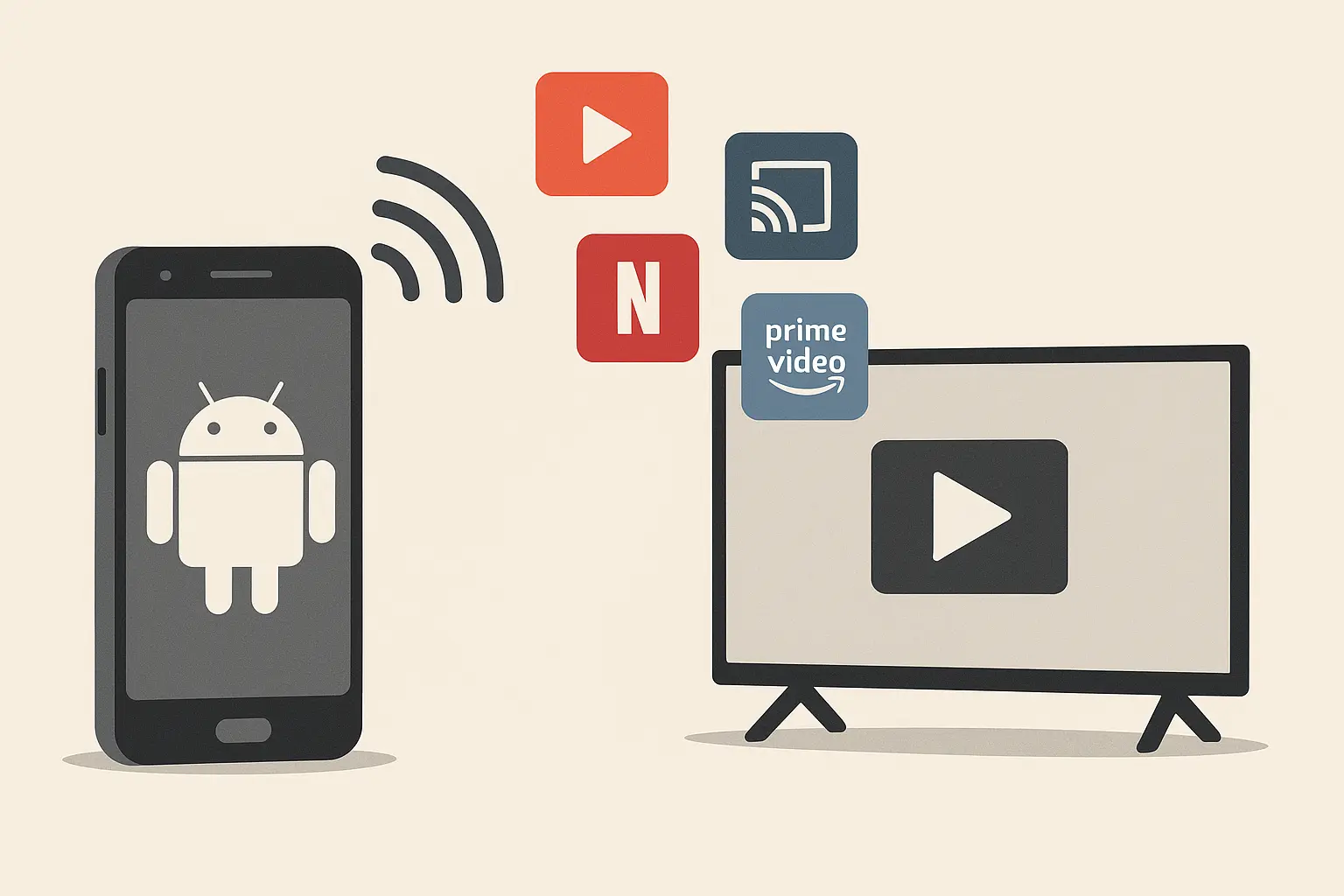
Table of Contents
Your Phone Can Already Cast (Here's How)
When Basic Casting Isn't Enough
Hardware That Works (And What Doesn't)
Why Casting Fails (And Quick Fixes)
Network Issues That Break Everything
When Your Phone and TV Won't Talk
Advanced Tricks for Power Users
Casting to Multiple Screens
Gaming and Real-Time Content
Privacy and What You're Actually Sharing
Final Thoughts
TL;DR
Your Android phone has built-in casting through Google Cast - just swipe down twice and tap the Cast button
Screen mirroring shows everything on your phone, while content casting only sends specific media to your TV
XCast and universal casting apps work with more TV brands than Google's native casting
Both devices must be on the same Wi-Fi network - guest networks often block casting
USB-C to HDMI adapters provide the most reliable wired connection when wireless fails
Router settings like AP isolation can prevent casting from working properly
Gaming over casting introduces latency that affects real-time gameplay
DRM protection limits casting quality for many streaming services
Your Phone Can Already Cast (Here's How)
Google Cast is built into every Android phone. It connects directly to your TV without needing extra apps. The feature runs so deep that you'll find Cast buttons appearing in supported apps automatically. When you tap that rectangle-with-waves icon, your phone doesn't just mirror its screen - it tells the TV to pull content directly from the internet. This means better quality and less battery drain.
Here's the fastest way to start: Swipe down from the top of your Android screen twice to expand Quick Settings, tap the Cast tile, select your target device from the list, and hit "Start now." Your phone will immediately begin connecting to the selected display.
Recent user experiences highlight why this matters. As one user shared: "It started with Doctor Strange in the Multiverse of Madness. I was watching it on my Samsung phone, enjoying the chaos of collapsing dimensions, until I looked up at my 50-inch Samsung Smart TV" from TechCabal. This perfectly captures the moment when you realize your phone's small screen just isn't enough.
Once you start casting regularly, you'll want to keep your phone positioned where you can still use it. Phone positioning and mounting solutions become important for maintaining stable connections during extended sessions.
Screen Mirroring vs Content Casting: Why This Matters
This difference matters because screen mirroring broadcasts everything on your phone (including those embarrassing notifications), while content casting sends only specific media to your TV, freeing up your phone for other tasks.
Screen mirroring turns your TV into a giant version of your phone screen. Every notification, every app switch, every text message shows up on the big screen. Content casting sends only the video, music, or photos you choose while keeping your phone's interface private.
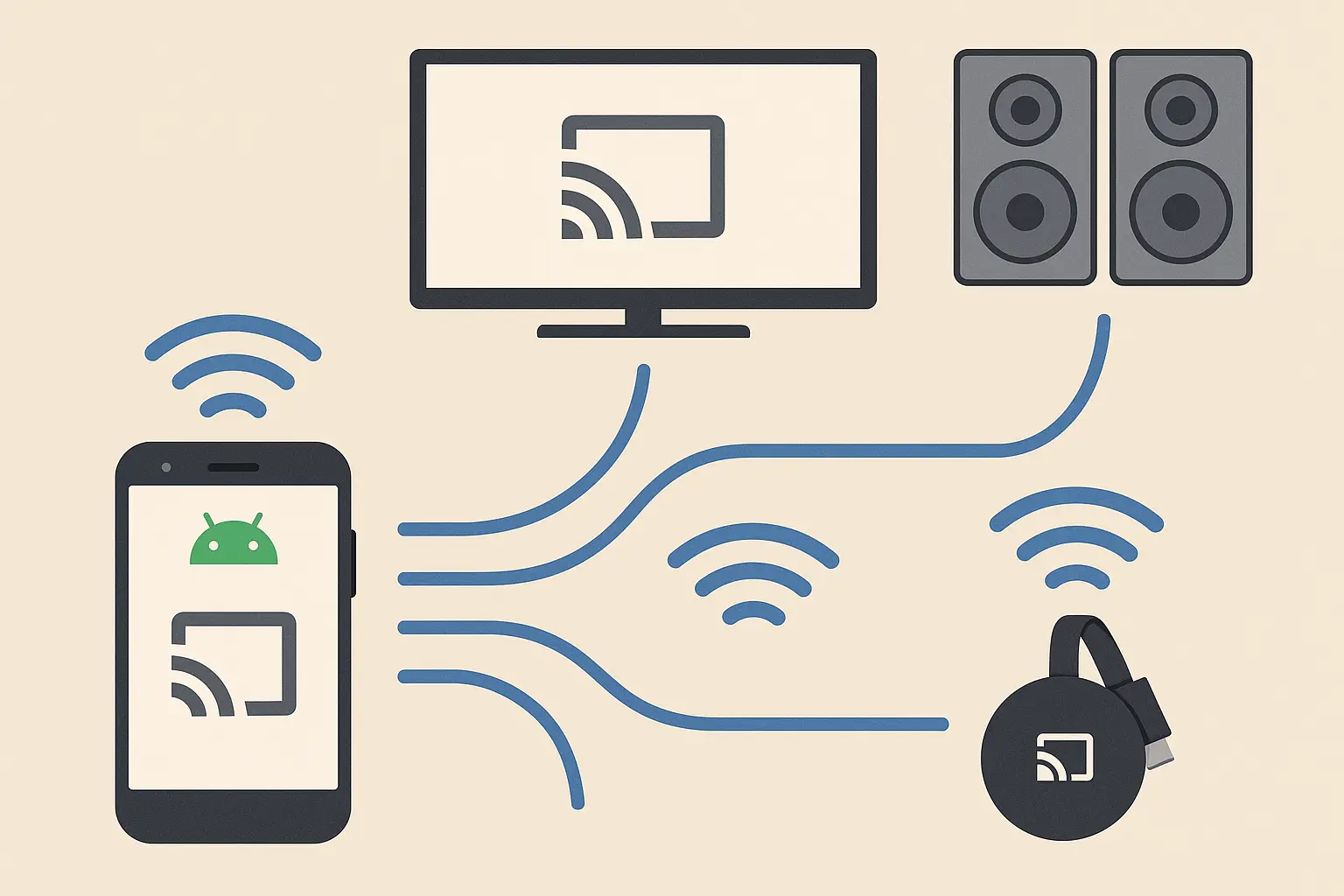
Here's when to use each:
Screen Mirroring: Good for presentations, showing apps, or when you want everything visible on TV. Uses more battery and shows all notifications.
Content Casting: Perfect for movies, music, and photos. Keeps your phone private and uses less battery. You can use other apps while content plays.
Quick Settings: Your Casting Control Center
The Cast button in your notification panel is more powerful than most people realize. This method often works better than diving into individual app settings because it bypasses app-specific limitations and gives you system-level control.
The Quick Settings approach works even when individual apps are having casting issues. It's your first troubleshooting step when app-based casting fails.
When Basic Casting Isn't Enough
Built-in casting works great when everything aligns perfectly, but real life involves older TVs, different network setups, or devices that don't speak Google's casting language. That's when third-party solutions become essential.
XCast and Universal Apps: Breaking Compatibility Barriers
XCast and similar apps are lifesavers for TVs that don't play nice with Google Cast. These apps support additional protocols like DLNA and UPnP, connecting to a much wider range of devices.
The beauty of XCast is its flexibility. While Google Cast requires specific hardware support, XCast can communicate with virtually any smart TV or streaming device that supports network connections. I've used it successfully with 8-year-old Samsung TVs that Google Cast couldn't even detect.
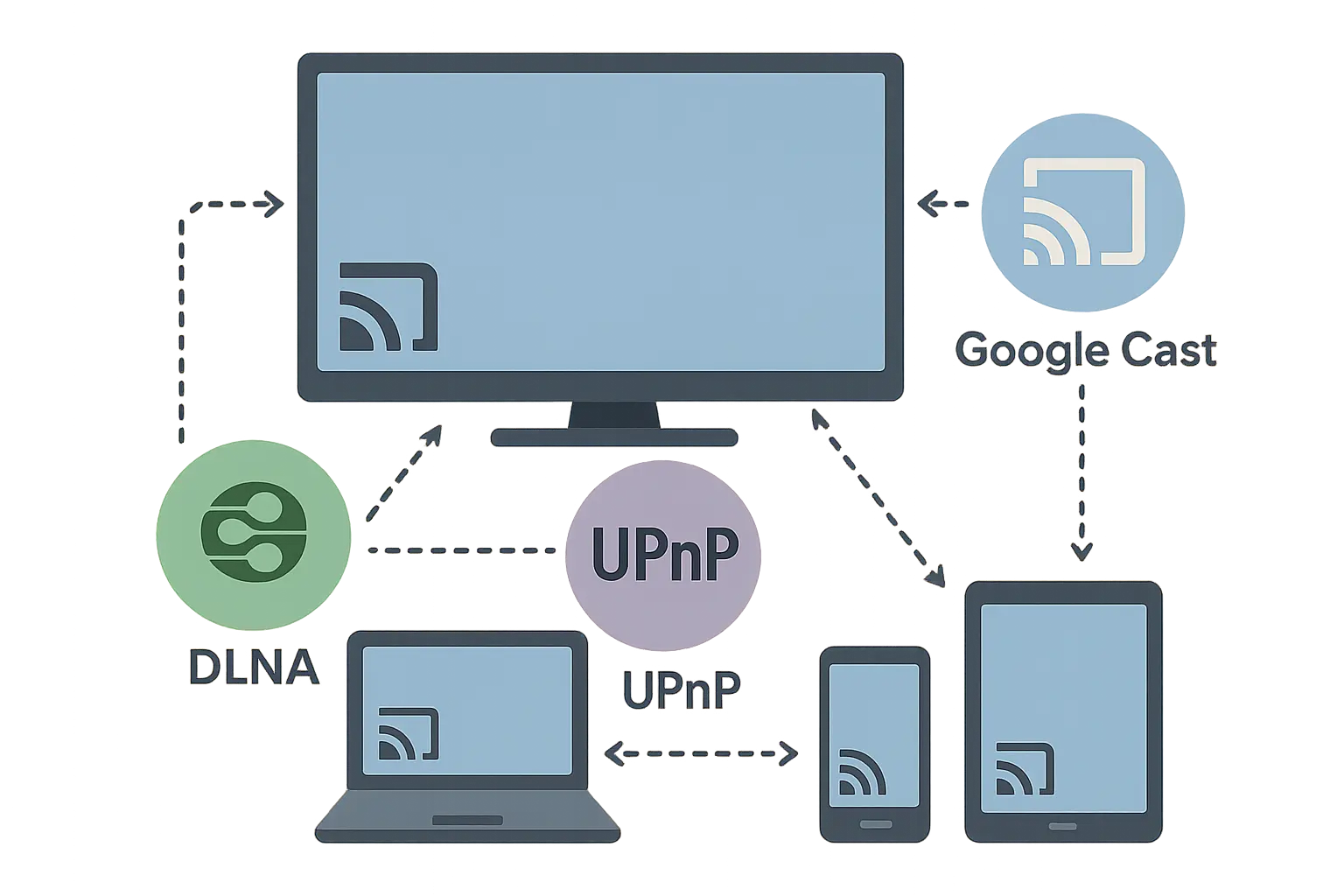
These universal apps offer more control over connection settings, letting you adjust quality, resolution, and audio codecs to match your specific hardware. The trade-off is usually a more complex setup process, but the expanded compatibility makes it worthwhile.
Why Netflix Behaves Differently
Ever notice how casting from Netflix feels different than casting from your photo gallery? Streaming services implement their own casting protocols. Netflix uses its own system that includes additional copy protection and quality optimizations. When you cast from the Netflix app, you're using their system rather than Android's generic framework.
This explains why Netflix casting sometimes works when system-level casting fails, and vice versa. YouTube's implementation is even more sophisticated, allowing you to queue multiple videos, control playback from multiple devices, and continue playing when your phone goes to sleep. These features aren't available through generic screen mirroring.
Hardware That Works (And What Doesn't)
Physical solutions can solve problems that software can't touch. Understanding the strengths and limitations of each option helps you build a reliable setup.
For professionals who need reliable casting in demanding environments, rugged phone protection becomes essential when your device serves as the primary casting source.
Chromecast and Streaming Sticks
Google Chromecast, Fire TV Stick, and Roku devices each handle Android casting differently:
Google Chromecast ($30-50): Best Android integration since it's designed for Google's protocols. Setup is straightforward and performance is consistently reliable.
Fire TV Stick ($25-55): Good Android casting through built-in Miracast. Not quite as polished as Chromecast but excellent if you're already in Amazon's ecosystem.
Roku ($30-70): Solid casting support and platform-agnostic approach. Good middle ground if you don't want to commit to one ecosystem.
Apple TV ($130-180): Limited Android compatibility. Only consider if you're primarily in Apple's ecosystem.
Smart TV Built-in (varies): No additional hardware needed, but compatibility varies by brand and model year.
Smart TV Native Support
Modern smart TVs from Samsung, LG, and Sony often include built-in casting receivers, eliminating the need for additional hardware.
Samsung's Smart TVs offer excellent Android casting support through their built-in Miracast and Smart View features. Their 2020 and newer models handle 4K casting well, with minimal lag and good audio sync.

LG's webOS platform includes solid casting capabilities, though the interface can be less intuitive than Samsung's. Sony TVs running Android TV provide native Google Cast support, making them highly compatible with Android phones.
USB-C to HDMI: When You Need It to Work
When wireless casting fails (and it will), a USB-C to HDMI adapter provides an unbreakable wired connection. This method doesn't depend on Wi-Fi quality or compatibility issues, making it perfect for critical presentations or unreliable network environments.
According to Sony's casting documentation, Android devices running Android 2.3 or later support casting functionality, ensuring broad compatibility across the Android ecosystem.
The wired approach eliminates every variable that causes wireless casting problems: network congestion, compatibility issues, interference, and device discovery failures. Keep a USB-C to HDMI adapter handy specifically for situations where wireless casting isn't reliable enough.
Why Casting Fails (And Quick Fixes)
Most casting failures stem from network configuration issues rather than hardware problems. Understanding the common causes helps you troubleshoot systematically instead of randomly trying solutions.
Common scenario: You select your TV from the casting menu, see "Connecting..." for 30 seconds, then get an error message. This usually indicates a network discovery issue.
Quick fix: Restart both devices, ensure they're on the same Wi-Fi network (not guest networks), and try casting again within 2 minutes of the restart.

The timing matters because devices need to rediscover each other on the network after a restart. Waiting too long allows network caches to rebuild with the old, problematic connection information.
Network Issues That Break Everything
Your Wi-Fi network is the foundation of successful casting. Small configuration issues can completely break the connection, but network problems are usually fixable once you know what to look for.
The Same Network Rule Everyone Forgets
This seems obvious, but it's the #1 reason casting fails. Both your Android phone and casting device must be on identical Wi-Fi networks - guest networks and network isolation settings will block device discovery.
Casting Network Checklist:
Phone connected to main Wi-Fi network (not mobile data)
TV/casting device on same network name
Guest network disabled or not in use
Both devices showing strong Wi-Fi signal
Router not blocking network communication
AP isolation disabled in router settings
People spend hours troubleshooting only to discover their phone was connected to "HomeNetwork" while their TV was on "HomeNetwork_5G." Even though these networks might share internet access, they're isolated from each other for device discovery.
Router Settings That Kill Casting
Some routers block the network communication that casting relies on. AP isolation, guest network restrictions, and overly aggressive firewall settings can prevent successful connections even when everything appears configured correctly.
AP isolation is sneaky because it's designed as a security feature that prevents devices on your network from communicating with each other. While this protects against certain attacks, it completely breaks casting functionality.
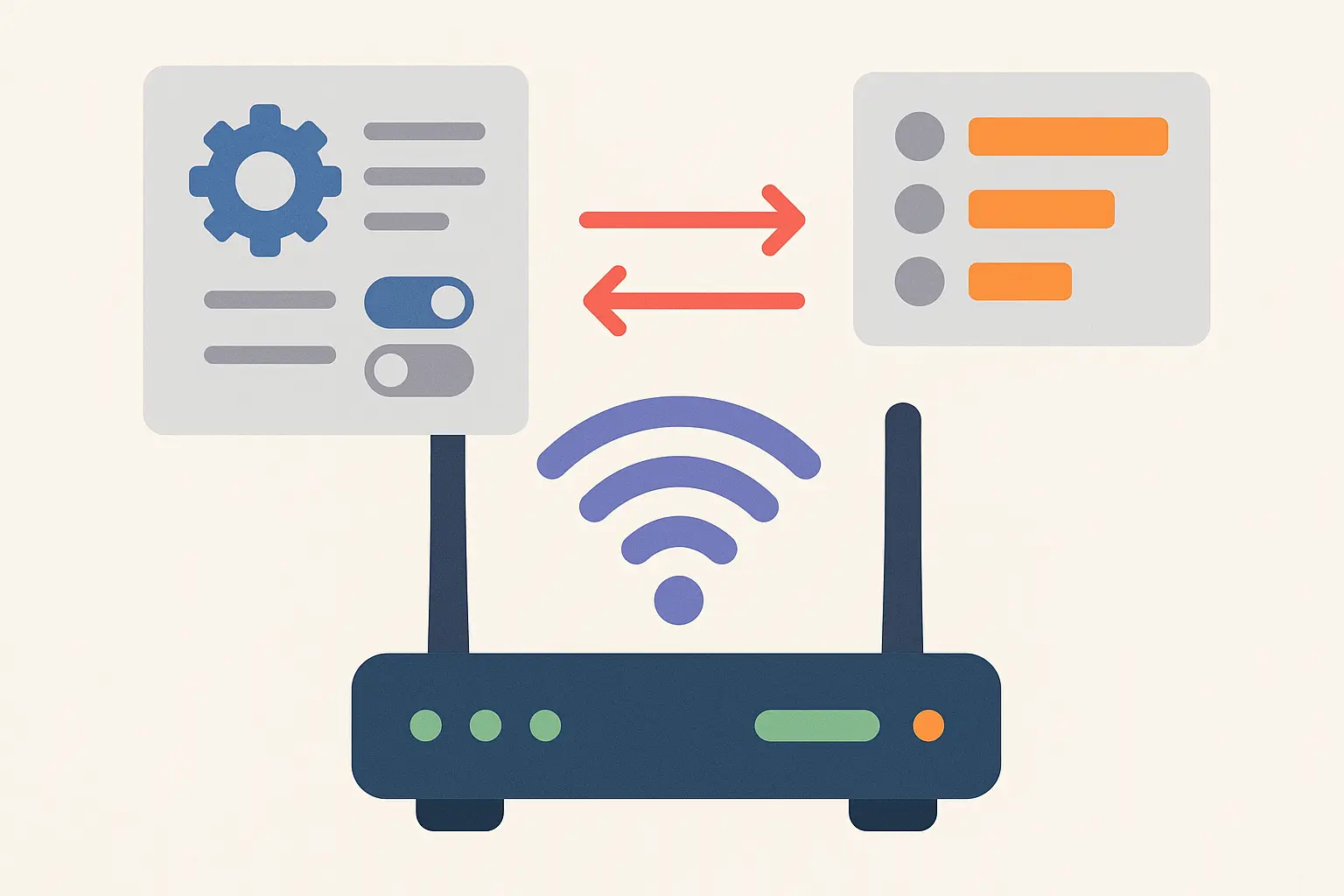
Many routers enable AP isolation by default on guest networks, which explains why casting often fails when visitors try to share content. You'll need to either disable AP isolation or move casting devices to your main network.
When Your Phone and TV Won't Talk
Not all Android phones and TVs play nicely together. Understanding these limitations can save hours of frustration.
Compatibility issues often look like network problems, leading to hours of router troubleshooting when the real issue is hardware limitations. Knowing your devices' capabilities upfront prevents this frustration.
Android Version Issues
Older Android versions have limited casting support. Android 4.4.2 and later generally support Google Cast natively, but earlier versions need workarounds through third-party apps. The experience on older versions is often less reliable and more limited in terms of supported content types.
TV and Receiver Limitations
Different smart TVs and streaming devices support varying casting protocols with different performance levels, especially for high-resolution content. Budget smart TVs often support casting protocols but lack the processing power to handle high-resolution content smoothly.
Understanding these limitations helps you adjust quality settings appropriately rather than assuming your network or phone is the problem.
Getting Smooth Performance
4K content requires at least 25 Mbps of sustained bandwidth, but your network's theoretical speed doesn't guarantee consistent performance. Based on TCL's mirroring guide, both Android devices and TVs must support screen mirroring functionality and be connected to the same Wi-Fi network for optimal performance.
Gigabit connections can struggle with casting because of interference from neighboring networks or outdated router firmware. The direct Wi-Fi connection necessary for smooth casting requires more than just raw speed.
Advanced Tricks for Power Users
Once you've mastered basic casting, these techniques unlock capabilities that can genuinely change how you use your devices together.
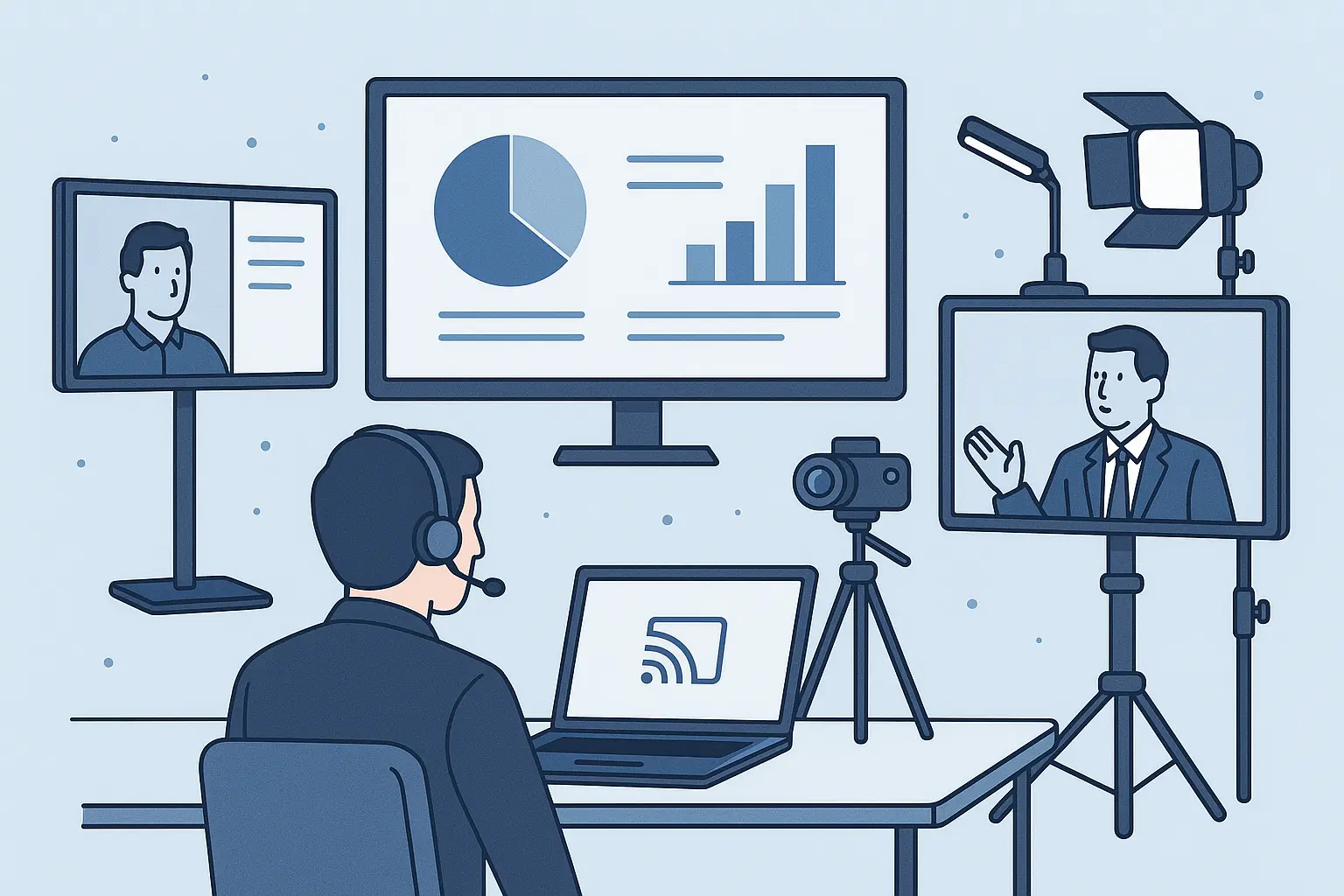
Advanced content casting lets you control what's playing on your TV while simultaneously using your phone for something completely different. This works by establishing independent communication channels between your phone and receiving devices.
Casting to Multiple Screens
Coordinating casting across multiple devices opens up incredible possibilities for whole-home entertainment and professional presentations. Multi-device casting transforms your phone from a simple remote control into a central hub that orchestrates content across your entire home.
Whole-Home Audio from Your Phone
Google's speaker groups and similar features allow you to cast audio to multiple devices simultaneously, creating immersive audio experiences throughout your home. Google's Fast Pair technology supports over 400 headphones according to Android's Better Together documentation, enabling quick Bluetooth connections that complement casting setups.
The synchronization isn't perfect - you'll notice slight delays between speakers in different rooms - but it's close enough for background music and ambient audio. Keeping grouped speakers within the same general area minimizes noticeable sync issues.
Screen Sharing for Presentations
Advanced screen mirroring transforms your phone into a powerful presentation tool for sharing documents, apps, and interactive content on larger displays.
For professional presentations: Connect your phone to the display via USB-C to HDMI for reliability, enable "Do Not Disturb" mode to prevent notification interruptions, and use presentation apps like Google Slides that support presenter view - keeping notes on your phone while slides display on the big screen.
Professional presenters often benefit from magnetic tripod phone mounts that allow precise positioning during casting sessions. Stable phone positioning prevents accidental disconnections that can derail important meetings.
Gaming and Real-Time Content
Gaming over casting introduces unique challenges. Latency issues affect gameplay, and understanding which games work well with casting helps you optimize your setup for interactive applications.
Gaming through casting typically introduces 100-300ms of additional latency, which sounds minimal but feels significant during fast-paced gameplay. Turn-based games and puzzle games handle this delay well, while action games and competitive multiplayer become nearly unplayable.
Minimizing Gaming Delay
Wired connections eliminate most casting-related latency, making USB-C to HDMI adapters essential for serious mobile gaming on big screens. The direct connection bypasses network processing delays that wireless casting can't avoid.
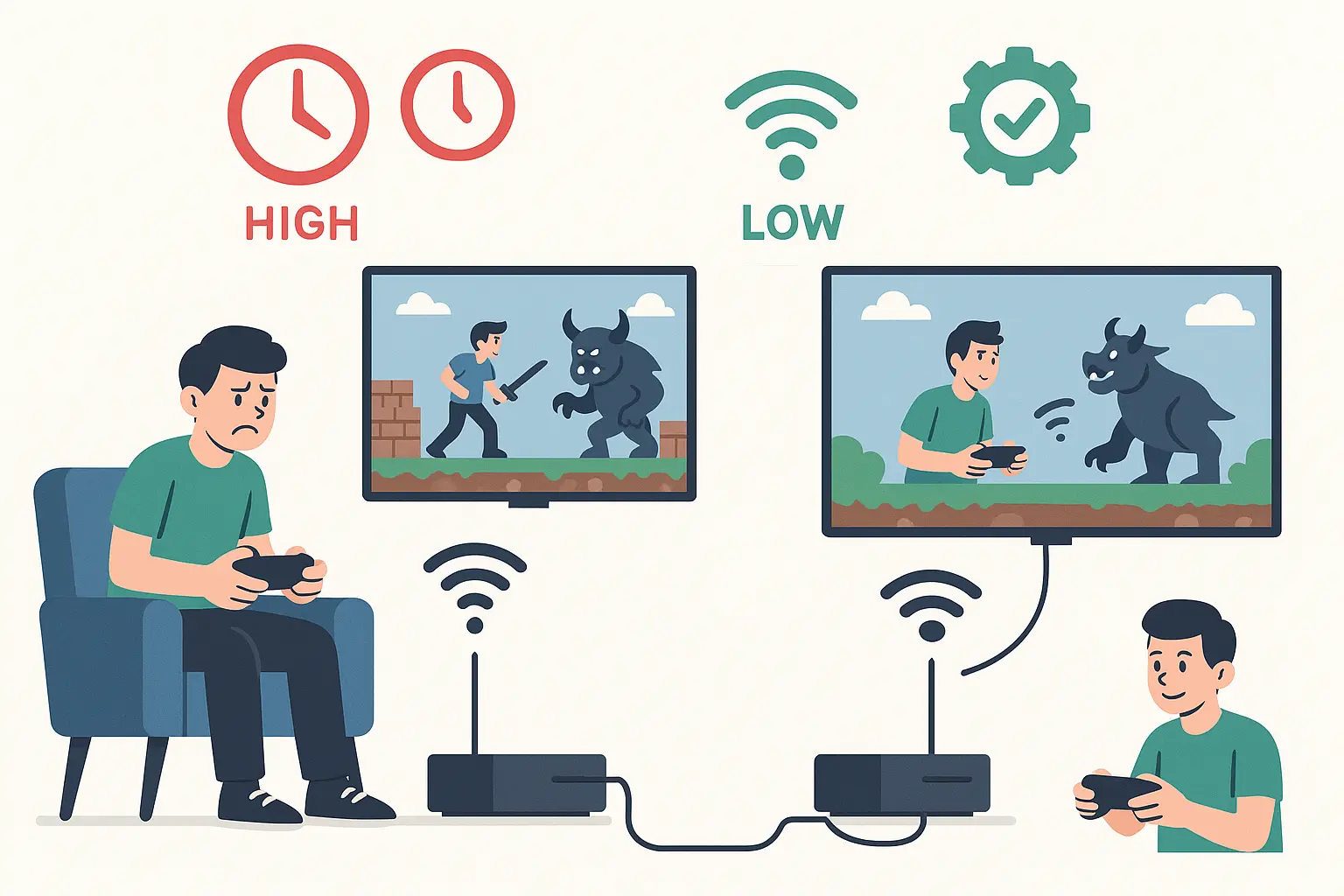
Strategy games, RPGs, and casual puzzle games work excellently with casting because they don't require split-second timing. Racing games and first-person shooters become exercises in frustration due to input lag.
Managing Dual-Screen Controls
Some casting scenarios allow your phone to function as a controller while content displays on TV. Certain games and apps are designed for dual-screen experiences, where your phone becomes a controller or secondary display. These implementations work much better than trying to force traditional single-screen apps into casting scenarios.
Privacy and What You're Actually Sharing
Casting involves transmitting data across your network. Understanding the privacy implications helps you make informed decisions about what to share and with whom.
Privacy concerns with casting go beyond preventing embarrassing notifications from appearing on shared screens. The data transmission methods and network access requirements create potential security considerations.
Safe Sharing with Visitors
Setting up dedicated guest networks for casting provides visitors with streaming capabilities while protecting your main network and connected devices. Guest networks with casting capabilities need specific configuration to allow device discovery while maintaining security boundaries. Most routers disable the network communication required for casting on guest networks by default.
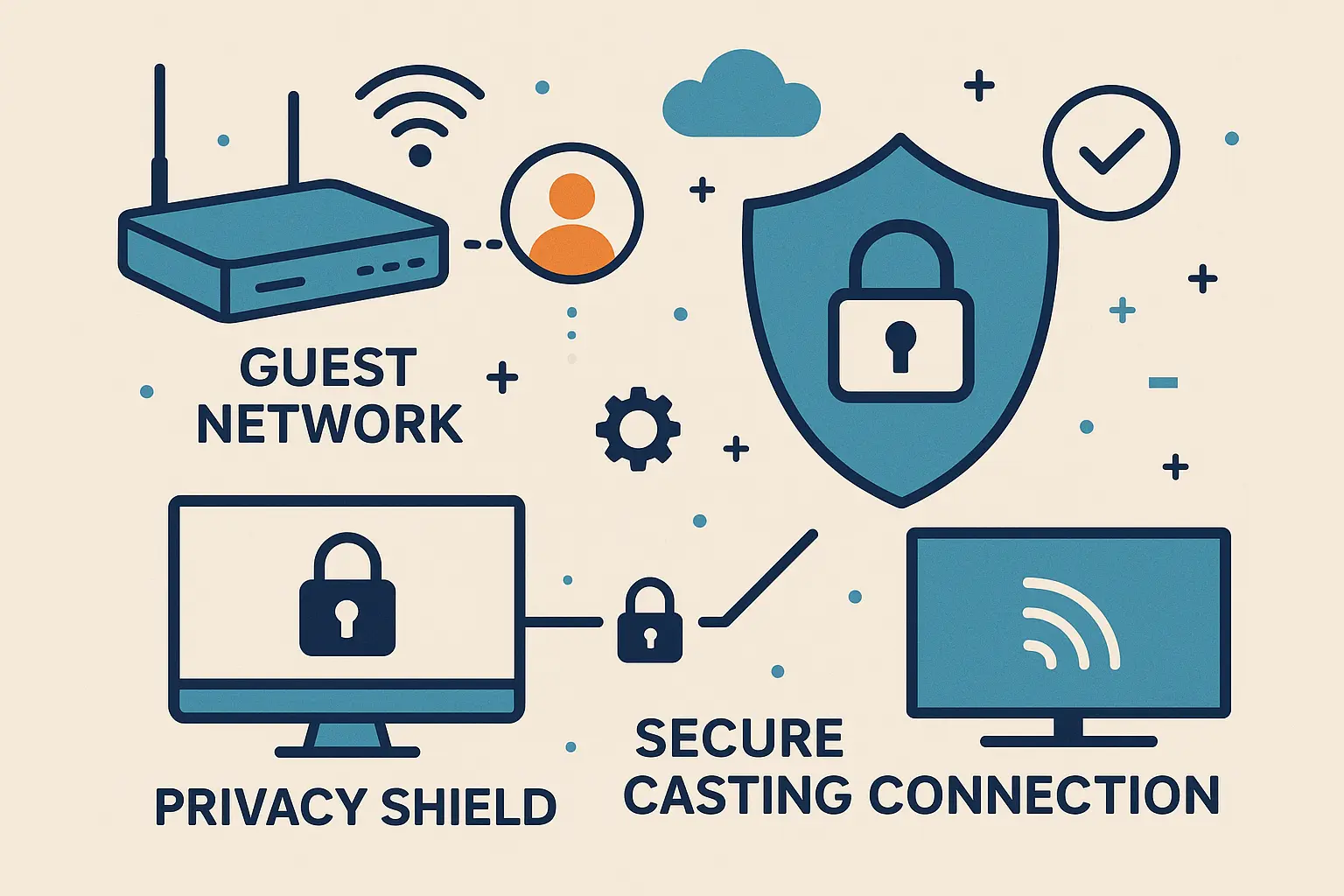
Content Protection Limits
Many streaming services implement digital rights management that prevents casting certain content or reduces quality to maintain content protection. These limitations explain why some content won't cast properly.
Copy Protection Casting Limits:
Netflix: Limited to 720p on most casting devices
Disney+: Blocks casting for new releases
HBO Max: Restricts casting during promotional periods
Amazon Prime: Varies by content licensing
Apple TV+: Generally allows full-resolution casting
YouTube Premium: No casting restrictions
These restrictions exist to prevent unauthorized recording and distribution, but they can be frustrating when you're trying to enjoy legitimately purchased or subscribed content on your own devices.
Rokform Connection: Enhancing Your Casting Experience
Mastering Android casting opens incredible entertainment and productivity possibilities, but the experience improves dramatically with proper phone protection and positioning solutions. Rokform's rugged cases, featuring powerful N52 Neodymium magnets, perfectly complement your casting setup.
During casting sessions, you'll want your phone positioned at optimal viewing angles for control or simultaneous use. Rokform's magnetic mounting system securely attaches your phone to any magnetic surface near your entertainment center, keeping it accessible throughout extended casting sessions. The 2-3x stronger magnetic grip ensures your device stays put.
For mobile casting - whether sharing content in conference rooms, camping with portable projectors, or using your phone's hotspot for remote casting - Rokform's military-grade drop protection becomes essential. The 6-foot drop protection and 360-degree coverage keep your phone functional in demanding environments where casting capabilities matter most.
Whether you're presenting in boardrooms or streaming outdoors, wireless charging solutions ensure your phone stays powered during extended casting sessions without cable interruptions.
Rokform's slim profile won't interfere with USB-C to HDMI adapters when you need reliable wired casting connections. Whether you're a mobile professional giving presentations or someone who wants seamless casting without worrying about phone damage, Rokform's rugged cases provide the durability and functionality to support your casting needs anywhere.
For users who frequently cast content while traveling or working remotely, portable travel accessories can enhance your mobile casting setup significantly.
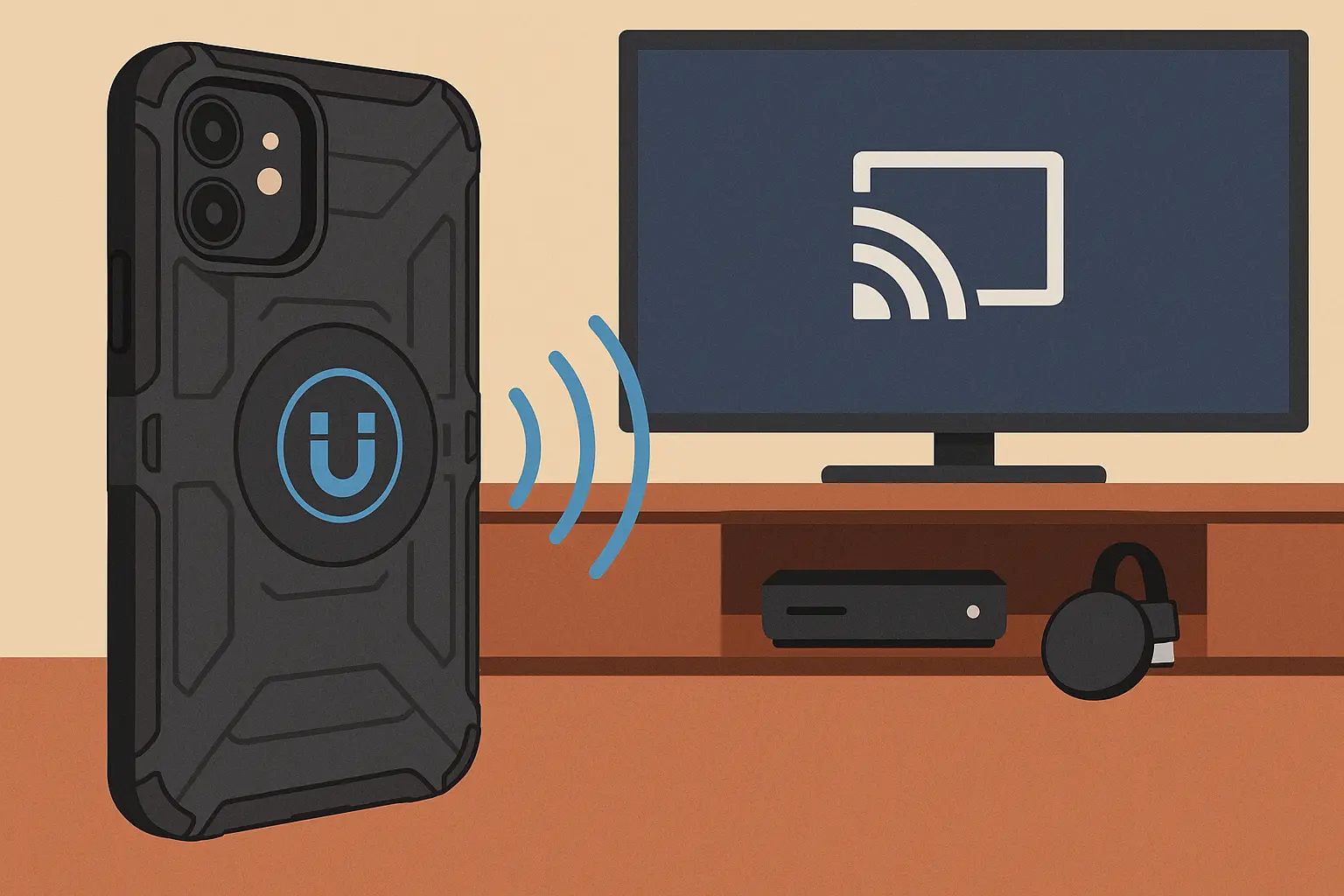
Final Thoughts
Casting from your Android phone to TV doesn't have to be frustrating. The methods, troubleshooting steps, and advanced techniques covered here work in real-world situations.
Start with your phone's built-in Google Cast features - they're more capable than most people realize. When those fall short, XCast and universal casting apps can bridge compatibility gaps with older or non-standard devices. For absolute reliability, keep a USB-C to HDMI adapter handy as your backup solution.
Network configuration causes more problems than device compatibility. Ensuring both devices share the same Wi-Fi network and checking router settings will solve most casting failures. When you're ready to explore advanced techniques like multi-device casting or gaming optimization, you'll have the foundation knowledge to make those features work reliably.
Different casting methods serve different purposes. Screen mirroring works great for presentations, content casting is perfect for entertainment, and wired connections provide the reliability you need when wireless solutions fail. Master these fundamentals, and you'll transform your Android phone into a powerful content distribution hub that works consistently across any setup.
Success with casting comes down to matching the right method to your specific situation and understanding the limitations of each approach. Once you know these principles, you can cast to tv reliably regardless of the hardware combination you're working with.









